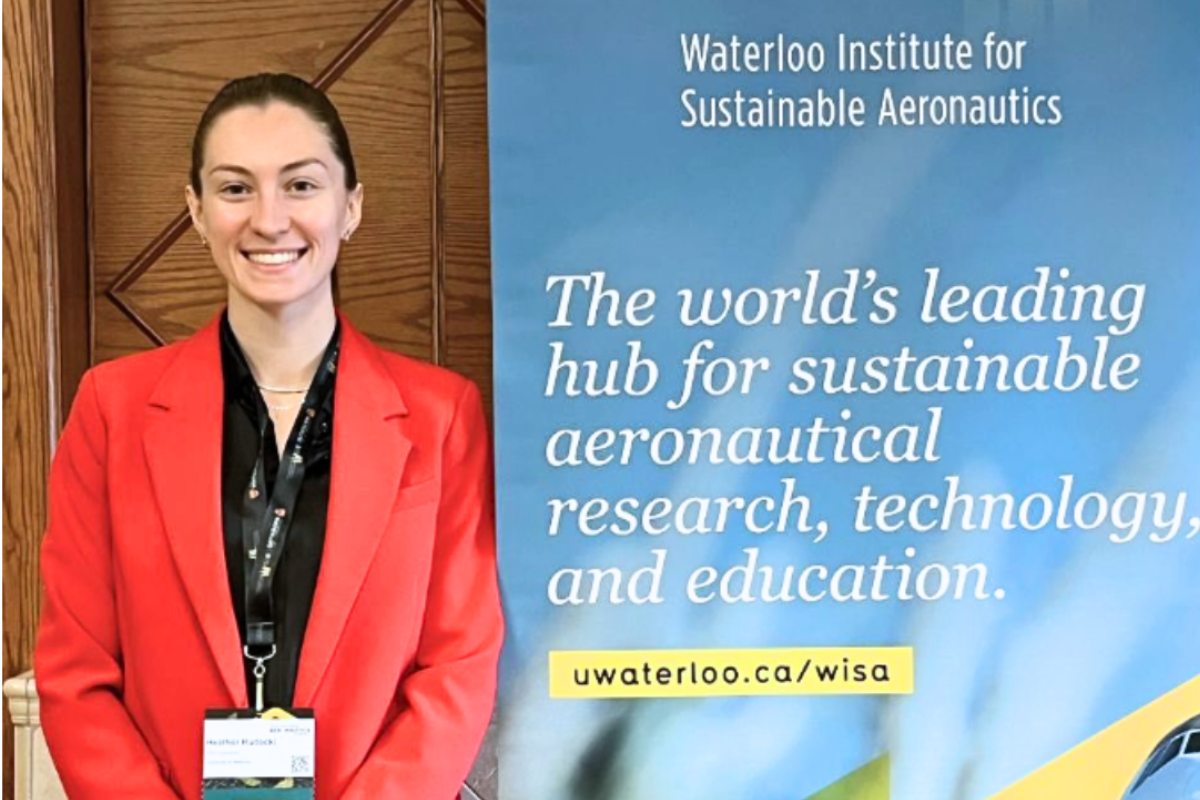
By Jade Lankowski
Heather Hudecki, second-year PhD student in vision science and aeronautics, recently won the Waterloo Institute for Sustainable Aeronautics (WISA) Three-Minute Thesis competition with her research on colour vision for pilots. Working under Dr. Elizabeth Irving and Dr. Ben Thompson, Hudecki’s research examines if pilots with colour vision deficiencies (CVD) can interpret colour-related aspects of aviation, with a focus on precision approach path indicator (PAPI) lights.
Hudecki’s research questions if pilots with CVD struggle to interpret PAPI lights. Her research could contribute to creating globally agreed-upon colour vision standards for pilots, making careers in aviation accessible to individuals with CVD.
Can you give an overview of your research on colour vision in pilots?
Individuals with CVD have difficulty distinguishing between certain colours, specifically affecting red-green and blue-yellow perception. PAPI lights use a colour combination system to tell the pilot if the plane is or is not approaching the runway at the correct angle.
If the plane is too high to land safely, the lights will appear white. If the plane is too low, the lights will appear red. If the plane approaches the landing at the correct angle, the lights will appear red and white. The pilot needs to be able to interpret the colour combination of the PAPI lights to adjust the plane’s descent based on the colour of the lights.

Why did you decide to focus on this topic?
Colour vision requirements for pilot licensing lack global standardization, which leads to variation in how countries address CVD among aspiring pilots. Without uniform regulations, pilots with CVD may be eligible to fly in one country but may be restricted in another.
This inconsistency highlights the need for globally agreed-upon standards for vision deficiency, especially given the international nature of aviation. My research could potentially contribute to the creation of globalized standards by proving that individuals with CVD can identify the correct colour combination of PAPI lights. Having uniform guidelines would ensure safety and fair access to the profession.
Why is colour vision so critical for pilots?
Various aspects of aviation involve colour, so proper colour interpretation by pilots is essential to aviation safety. Visual flight cues (e.g., PAPI lights or runway and taxi lights), flight deck instrumentation, aircraft system controls and air traffic controls all require colour competency.

What motivated you to enter the WISA Three-Minute Thesis competition?
I was enrolled in a graduate aviation course and my professor recommended that I participate in the event. The competition was held during the Sustainable Aeronautics Summit. It gave me a platform to receive feedback from a diverse range of professionals from the aviation community.
The opportunity to present before top minds in aviation was rewarding. As well, hearing others' presentations and bonding with fellow presenters during the stressful preparation fostered a strong sense of community within the group.
What were some challenges in your research and presentation?
A key challenge in my research is finding pilots with color vision deficiencies for testing. Current aviation standards make this difficult, and even if such pilots are found, they must be willing to travel to campus for testing. If pilots with CVD are unavailable, individuals with CVD outside of aviation must be recruited, but this requires educating them on how planes operate.
Getting non-pilots into an actual plane for testing is time-consuming and costly. To address these issues, flight simulators on campus are used as a practical and cost-effective alternative for assessment.
What do you hope your findings can achieve for the aviation industry?
This research could enhance pilot selection and training processes by identifying specific challenges faced by CVD pilots, leading to more precise screening methods and tailored training programs. The development of standardized global guidelines would ensure consistency in pilot certification while maintaining the highest safety standards.
